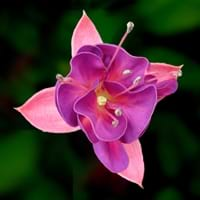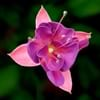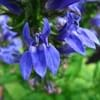Life Span
Perennial
Perennial
Type
Tender Perennial
Tree
Origin
Caribbean
Northeastern United States, Mid-Atlantic United States, Southeastern United States, Central United States
Types
Fuchsia Decidua, Fuchsia Fulgens, Fuchsia Splendens, Fuchsia Microphylla
Ardis, Arnold, Aureomarginatum
Number of Varieties
Not Available
Habitat
Forest edges, Woods
Bluffs, low mountains, Moist Soils, Woodlands
USDA Hardiness Zone
9-10
5-9
Sunset Zone
16, 17, 23, 24
1a, 1b, 2a, 2b, 3a, 3b, 4, 5, 6, 7, 8, 9, 10, 11, 12, 14, 15, 16, 17, 18, 19, 20, 21, 22, 23
Habit
Arching/Fountain-shaped
Pyramidal
Flower Color
Orange Red
Orange, Light Yellow
Flower Color Modifier
Not Available
Bicolor
Fruit Color
Not Available
Lime Green, Brown
Leaf Color in Spring
Purple, Dark Green
Green, Light Green
Leaf Color in Summer
Purple, Dark Green
Green
Leaf Color in Fall
Purple, Dark Green
Yellow, Light Yellow, Yellow green
Leaf Color in Winter
Unknown
Not Available
Leaf Shape
Long Linear
Irregular
Plant Season
Spring, Summer, Fall, Winter
Spring, Fall
Sunlight
Full Sun, Partial Sun, Partial shade
Full Sun, Partial Sun
Growth Rate
Medium
Medium
Type of Soil
Clay, Loam, Sand
Clay, Loam
The pH of Soil
Acidic, Neutral
Acidic, Neutral
Soil Drainage
Average
Average
Bloom Time
Indeterminate
Late Spring
Tolerances
Drought
Soil Compaction
Where to Plant?
Container, Ground, Pot
Ground
How to Plant?
Seedlings, Stem Planting, Transplanting
Seedlings
Plant Maintenance
Medium
Low
Watering Requirements
Requires regular watering
Do Not over Water, Keep the ground moist but not water-logged, Requires regular watering
In Summer
Lots of watering
Ample Water
In Spring
Moderate
Moderate
In Winter
Average Water
Average Water
Soil pH
Acidic, Neutral
Acidic, Neutral
Soil Type
Clay, Loam, Sand
Clay, Loam
Soil Drainage Capacity
Average
Average
Sun Exposure
Full Sun, Partial Sun, Partial shade
Full Sun, Partial Sun
Pruning
Prune in spring, Prune lower leaves, Remove dead or diseased plant parts, Remove deadheads, Remove shoots
Prune ocassionally, Remove dead branches
Fertilizers
All-Purpose Liquid Fertilizer
All-Purpose Liquid Fertilizer, fertilize in spring, Fertilize the soil instead of direct applying, Mulch
Pests and Diseases
Rhizoctonia Root Rot, Rust
fusarium canker, nectria canker, yellow-poplar weevil
Plant Tolerance
Drought
Soil Compaction
Flower Petal Number
Single
Not Available
Foliage Texture
Medium
Coarse
Foliage Sheen
Matte
Matte
Attracts
Hummingbirds
Birds
Allergy
Asthma, Hay fever
Not Available
Aesthetic Uses
Showy Purposes
Showy Purposes
Beauty Benefits
Not Available
Not Available
Environmental Uses
Air purification
Shadow Tree, Shelter for wildlife
Medicinal Uses
Not Available
Arthritis, Digestion problems, Fever, Inflammation, Wounds
Part of Plant Used
Flowers, Fruits
Whole plant
Other Uses
Not Available
Food for animals, Grown for shade, Used as Ornamental plant, Used in Furniture
Used As Indoor Plant
Yes
No
Used As Outdoor Plant
Yes
Yes
Garden Design
Bedding Plant, Container, Feature Plant, Foundation, Hedges, Tropical
Feature Plant, Shade Trees, Street Trees
Botanical Name
FUCHSIA triphylla
LIRIODENDRON tulipifera
Common Name
Fuchsia
Tulip Poplar, Yellow Poplar
In Hindi
फ्यूशिया
ट्यूलिप पेड़
In German
Fuchsie
Tulpenbaum
In French
Fuchsia
tulipier
In Spanish
Fucsia
árbol de tulipán
In Greek
φουξία
δέντρο τουλίπα
In Portuguese
Fúcsia
árvore de tulipa
In Polish
Fuksja
tulipanowiec
In Latin
Fuchsia
Tulipa arbore
Phylum
Magnoliophyta
Tracheophyta
Class
Dicotyledonae
Magnoliopsida
Order
Myrtales
Magnoliales
Family
Onagraceae
Magnoliaceae
Genus
Fuchsia
Liriodendron
Clade
Angiosperms, Eudicots, Rosids
Angiosperms, Magnoliids
Tribe
Not Available
Not Available
Subfamily
Not Available
Not Available
Season and Care of Fuchsia and Tulip Tree
Season and care of Fuchsia and Tulip Tree is important to know. While considering everything about Fuchsia and Tulip Tree Care, growing season is an essential factor. Fuchsia season is Spring, Summer, Fall and Winter and Tulip Tree season is Spring, Summer, Fall and Winter. The type of soil for Fuchsia is Clay, Loam, Sand and for Tulip Tree is Clay, Loam while the PH of soil for Fuchsia is Acidic, Neutral and for Tulip Tree is Acidic, Neutral.
Fuchsia and Tulip Tree Physical Information
Fuchsia and Tulip Tree physical information is very important for comparison. Fuchsia height is 45.70 cm and width 45.70 cm whereas Tulip Tree height is 1,830.00 cm and width 1,070.00 cm. The color specification of Fuchsia and Tulip Tree are as follows:
Fuchsia flower color: Orange Red
Fuchsia leaf color: Purple and Dark Green
Tulip Tree flower color: Orange and Light Yellow
- Tulip Tree leaf color: Green and Light Green
Care of Fuchsia and Tulip Tree
Care of Fuchsia and Tulip Tree include pruning, fertilizers, watering etc. Fuchsia pruning is done Prune in spring, Prune lower leaves, Remove dead or diseased plant parts, Remove deadheads and Remove shoots and Tulip Tree pruning is done Prune ocassionally and Remove dead branches. In summer Fuchsia needs Lots of watering and in winter, it needs Average Water. Whereas, in summer Tulip Tree needs Ample Water and in winter, it needs Average Water.





